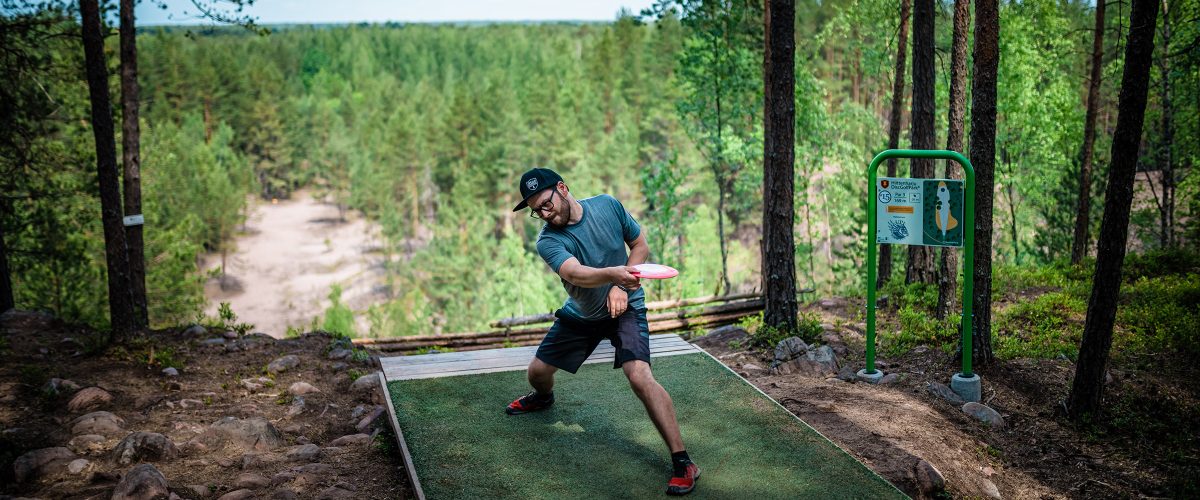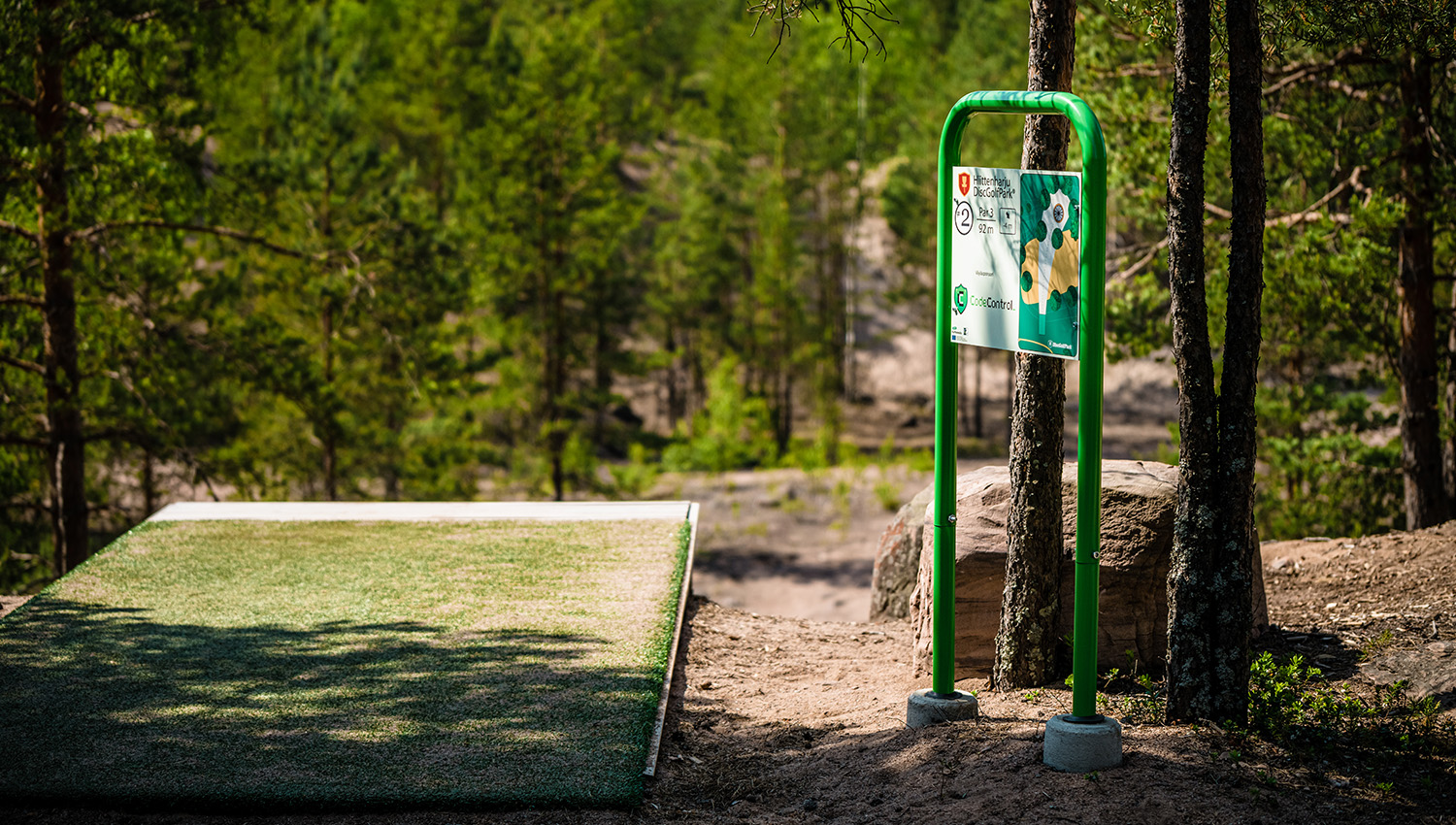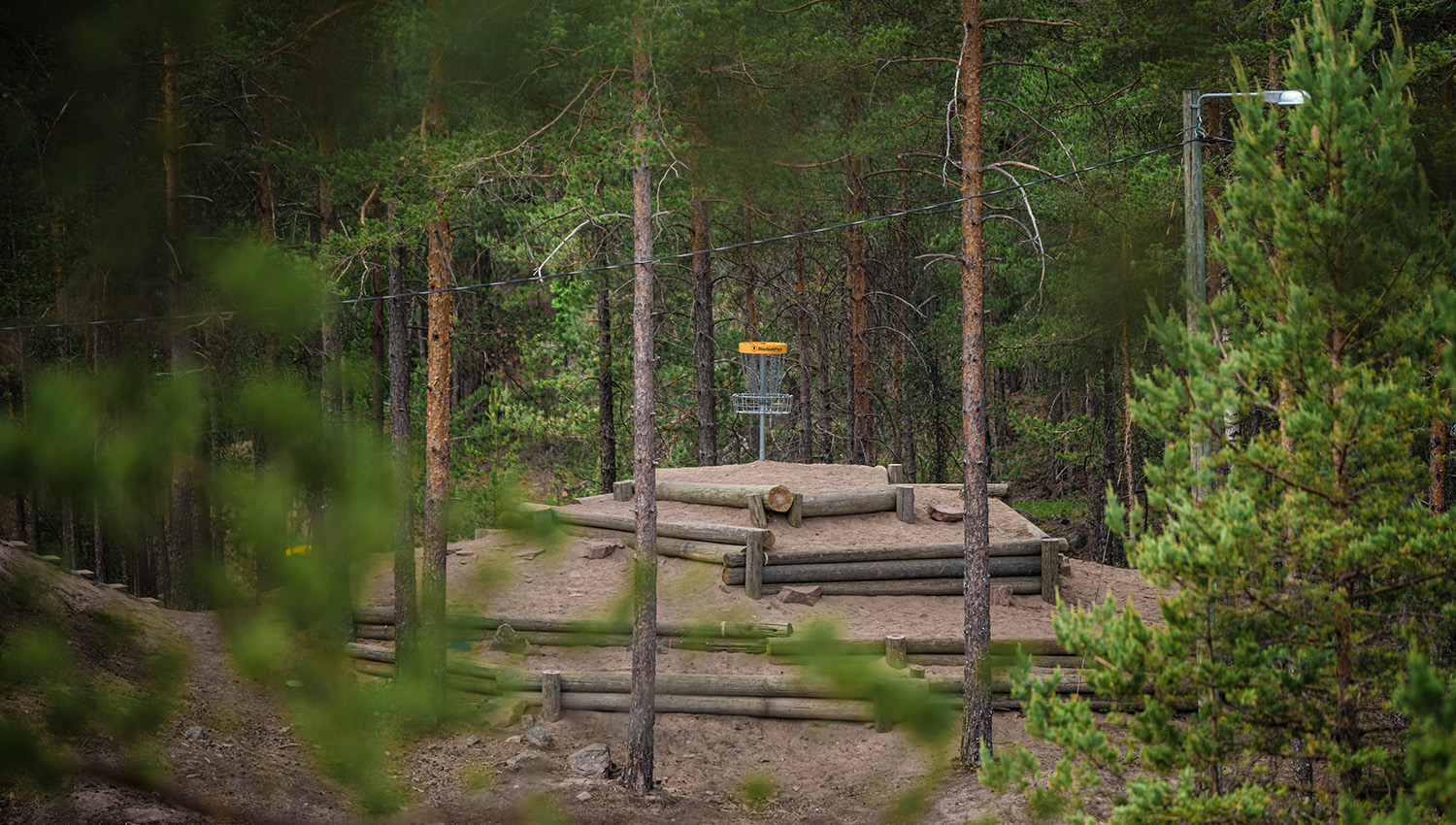How to build a disc golf course: 3 important don’ts

Welcome to the counterpart to our article ”How to build a disc golf course: 3 important dos.” Here we continue our look at guidelines for planning great disc golf courses. This time, though, we focus on some of the things inexperienced course designers may overlook that they definitely shouldn’t.
Like in our post on the ”dos” of disc golf course building, we created these ”don’ts” based on the advice and experiences of DiscGolfPark’s pro course designers Avery Jenkins, Pasi Koivu, and Dustin Keegan.
#1: Don’t compromise when it comes to disc golf course safety.
Safety must be your first priority when you build a disc golf course, and the most important safety rule is this: Mitigate the risk that someone can be hit with a disc as much as possible.
As an example of how important this rule is, take how Jenkins once completely abandoned a design blueprint he’d worked on for days for the first disc golf course in Montenegro once he recognized that the holes would be too close to a busy pedestrian area. Along with being concerned about the health and well-being of players and non-players alike, he knew the dire effects just one accident could have on disc golf’s future in the small country.
”We could’ve put baskets near the downtown circle where everyone’s going by and seeing people throwing discs and banging chains, but it just wasn’t going to be safe,” Jenkins said about his decision to move the course to a different area of the park. ”If this course takes off, it could spread like wildfire and produce a lot more courses across the country and region. But if someone gets hit, this thing gets yanked. No more disc golf in this town and who knows how long before we get disc golf somewhere else in that region?”
Disc golf discs aren’t Frisbees, and discs’ more aerodynamic edges are meant to help them fly fast and far, not glide gently into the hands of a catch partner. No matter how great you think a hole would be, you shouldn’t create it if it puts others in danger.
The basics of this are pretty straightforward. To keep non-players safe, don’t have disc golfers throw over or near busy walking paths, playgrounds, popular picnic areas, or other places where people tend to congregate. For player safety, don’t have the fairways of holes criss-cross each other, avoid creating blind baskets or landing zones (if people on the tee can’t see people playing, you create risk), and don’t have tees too near the baskets of other holes.

What may be less obvious is thinking of all the unintended ways people’s discs might fly.
For example, say you want to create a par 3 hole in a park that calls for a fairly long throw to reach the basket. When you do that, you need to keep in mind that when players go for distance, they tend to be less accurate. So you not only have to think about if your fairway and basket positioning are safe but how safe it would be if a disc flew far to the right or left of the fairway or even way behind the basket.
Another important aspect of safety is assuring course infrastructure and pathways aren’t hazardous. Wooden bridges and walkways can get very slick when wet, and steep dirt paths can erode and get steeper from use and/or become far too slippery when it rains.
In short, make sure that getting around your course is very unlikely to endanger players no matter the weather conditions or foot traffic levels.
#2: Don’t sacrifice overall course quality for the sake of a few great holes.
Sometimes a disc golf course designer walks up to a property and immediately sees a single beautiful hole in their mind. An area has exactly the right mixture of obstacles and clear fairway, the perfect level of visibility to passersby – put down a tee, cement in a basket, and voila!
However, a good designer will recognize that an early vision of a single perfect hole might not fit into a layout that’s perfect for a space.
In other words, if you become fixated on specific holes too early in your design process, you’re severely limiting your creative options.
”Once you’re dead set on one hole being one way, it changes everything else after it,” Jenkins explained. ”The hardest thing is keeping an open mind and not letting one hole dictate everything else. I always tell customers I’m going to go out and walk every square inch of a property – forwards, backwards, sideways, upside down – to give them the best possible layout.”
The takeaways here?
- Explore your space thoroughly, keeping an eye out for hole possibilities but not locking in any holes too early.
- Pay attention to whether you’re making compromises about the quality of multiple holes just to keep one or two holes you’re in love with. If you are, it may be time to abandon the holes you love for the good of the course.
- There will come a time when you need to make final calls. Feel confident you’ve thoroughly explored your options before you do.
#3: Don’t lose sight of the main goal: Fun.
One thing all three designers we talked to emphasized was just how essential it is to make sure a course is fun. Fun is what brings people back to play a track multiple times and what gets them to tell their friends that they should play it, too.
If you think about it, almost every tip in both of our articles on the dos and don’ts of disc golf course building is about keeping the fun factor as high as possible.
Don’t compromise on safety. Why? People getting hurt isn’t fun.
Don’t let a few holes spoil the rest of the course. Why? You want people to have fun on every hole.
We could keep going with the dos, but you probably get our point by now.
Still, there are some aspects of creating a fun disc golf course that don’t relate too closely to what we’ve talked about previously. One that Koivu brought up was the common pitfall of adding gimmicks to a hole for the sake of difficulty.

”One of the biggest mistakes is when a hole could be a straight 80 meters [263 feet] simple and easy but then there’s a mando and a dogleg at the end just to make it ’hard,'” Koivu said. ”In my opinion, that’s just taking the fun out of it.”
Jenkins mentioned how, especially for a course aimed at newer players, making each hole feel achievable was paramount to players enjoying themselves.
”You want to have people score – birdies are fun,” Jenkins said. ”Even for players who are struggling to get par, when they get their couple of pars out there, they really feel like they’re doing something.”
However, eventually courses that suit beginners can get less entertaining as players’ skills advance. One way to prepare for this eventuality and keep the fun rolling is to create courses with two tee positions when possible. This is what Keegan said he’d always do if given free rein to design the ideal course for an area where disc golf was new.
”I would build an advanced course with an inner design of shorter teepads for beginners to have a bunch of fun,” Keegan said. ”You want your first course to be one that can grow your game from a brand new player to become a tournament level player.”
And, of course, a huge key to fun is making sure that a course demands a variety of shots so players have new challenges at every turn.
”Nobody really wants to play a course with the same shot on every hole,” Keegan said.
Let us build your great disc golf course
If you’re considering adding a disc golf course in your area, you should be sure that it’s going to be done well. Because, in Keegan’s words, ”when courses aren’t designed properly, you end up with dull courses that don’t showcase the magic of disc golf.”
We at DiscGolfPark have brought that magic to many people across the world, and we offer anything from design consultation to full-service planning and installation. Additionally, our baskets, tees, and signage are the best in the business and have become a signal to players that they’re in for a high quality disc golf experience.
Want to make sure your course is full of nothing but ”dos”? Here’s how you can get in touch.
